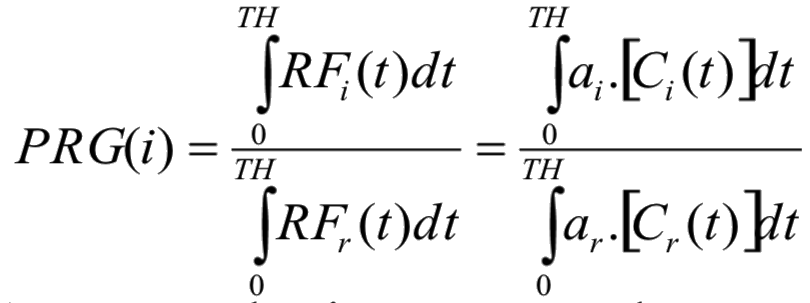Le « potentiel de réchauffement global » (PRG, global warming potential – GWP) d’un gaz exprime son effet de réchauffement dans le temps par rapport au dioxyde de carbone (PRG du CO2 =1) (Tableau 5.2)(IPCC, 2007aIPCC, 2007a : Climate Change 2007: The Physical Science Basis. Contribution of Working Group I to the Fourth Assessment Report of the Intergovernmental Panel on Climate Change. Cambridge University Press. 996 p.). Le PRG représente l’effet combiné de la concentration de ce gaz dans l’atmosphère, de sa durée de vie et de son efficacité d’absorption du rayonnement infrarouge sortant :

Avec
- TH : horizon temporel ;
- RF : forçage radiatif global ;
- a : efficacité radiative ;
- [C(t)] : concentration atmosphérique ;
- i et r sont respectivement le GES étudié et la référence (CO2).
| Gaz à effet de serre | PRG (100 ans) | Forçage radiatif en 2005 (W.m-2) | Augmentation du forçage radiatif 1998-2005 (%) |
|---|---|---|---|
| CO2 | 1 | 1,66 | 13 |
| CH4 | 25 | 0,48 | |
| CFC | ≈ 6000 – ≈ 14 000 | 0,32 | -1 |
| HCFC | ≈ 80 – ≈ 2300 | 33 | |
| N2O | 298 | 0,16 | 11 |
| HFC | ≈ 120 – ≈ 14 800 | 0,017 | |
| PFC | ≈ 9 000 | ||
| SF6 | 22 800 | 2,9.10-3 | 36 |
| Forçage radiatif total : | 2,63 | 9 | |


